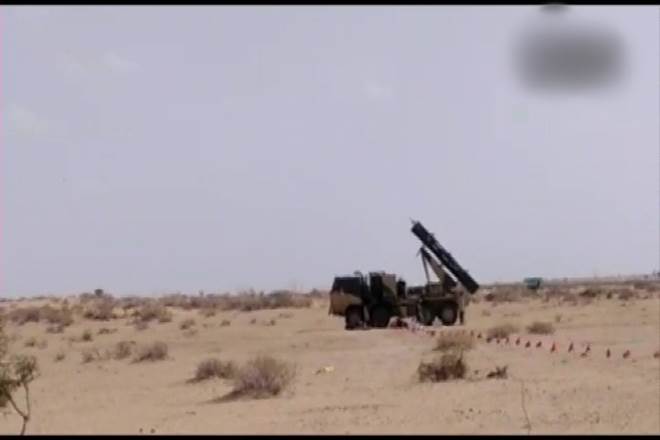Pinaka multi-barrel rocket system boost! The Defence Research and Development Organisation (DRDO) has carried out back-to-back successful tests of the Pinaka multi-barrel rocket system, a fact that shows that the Indian Army has a high precision, reliable and capable weapons system to supplement artillery guns. On Monday, two successful trials were conducted following which another test was carried out by DRDO on Tuesday. The three successful trials have met DRDO’s mission objectives, the Defence Ministry said in a statement. The trials were conducted in Rajasthan’s Pokharan. The role of Guided Pinaka is key to avoiding any collateral damage. Pinaka is a rocket system has a capability to nullify the targeted area. The Indian Army used Pinaka Mark I in the 1999 Kargil war. The name of the rocket derives from Pinaka which is the bow of Lord Shiva.
All you want to know about Pinaka multi-barrel rocket system:
The Pinaka guided rocket system was indigenously developed by the country’s defence lab DRDO. The DRDO’s weapon system, mounted on a Tatra truck, has state-of-the-art guidance kit. It is also equipped with an advanced navigation and control system. The indigenously developed guided Pinaka enhances the capability of the Indian Army to make precision hits.
WATCH Pinaka Missile video
#WATCH India successfully carried out third trial of Pinaka guided missile at Pokharan (Rajasthan) today. Two trials were conducted yesterday. pic.twitter.com/1glOwNYA1e
— ANI (@ANI) March 12, 2019
Earlier, the Pinaka rocket system could launch 12 rockets in just 44 seconds. Then DRDO decided to develop it into a precision-guided missile. The range and accuracy of the Pinaka rocket system are being increased. The development process is ongoing and various reports suggest that a more lethal Pinaka system will be ready for the Indian Army’s use by 2020.
While Pinaka Mark I has a range of 40 km, Pinaka Mark II can hit the target within a range of 70 to 80 km. Armament Research and Development Establishment (ARDE) and the High Energy Material Research Laboratory located in Pune and Hyderabad-based DRDO establishments have worked in tandem to come up with this potent weapon, as per IE report.

